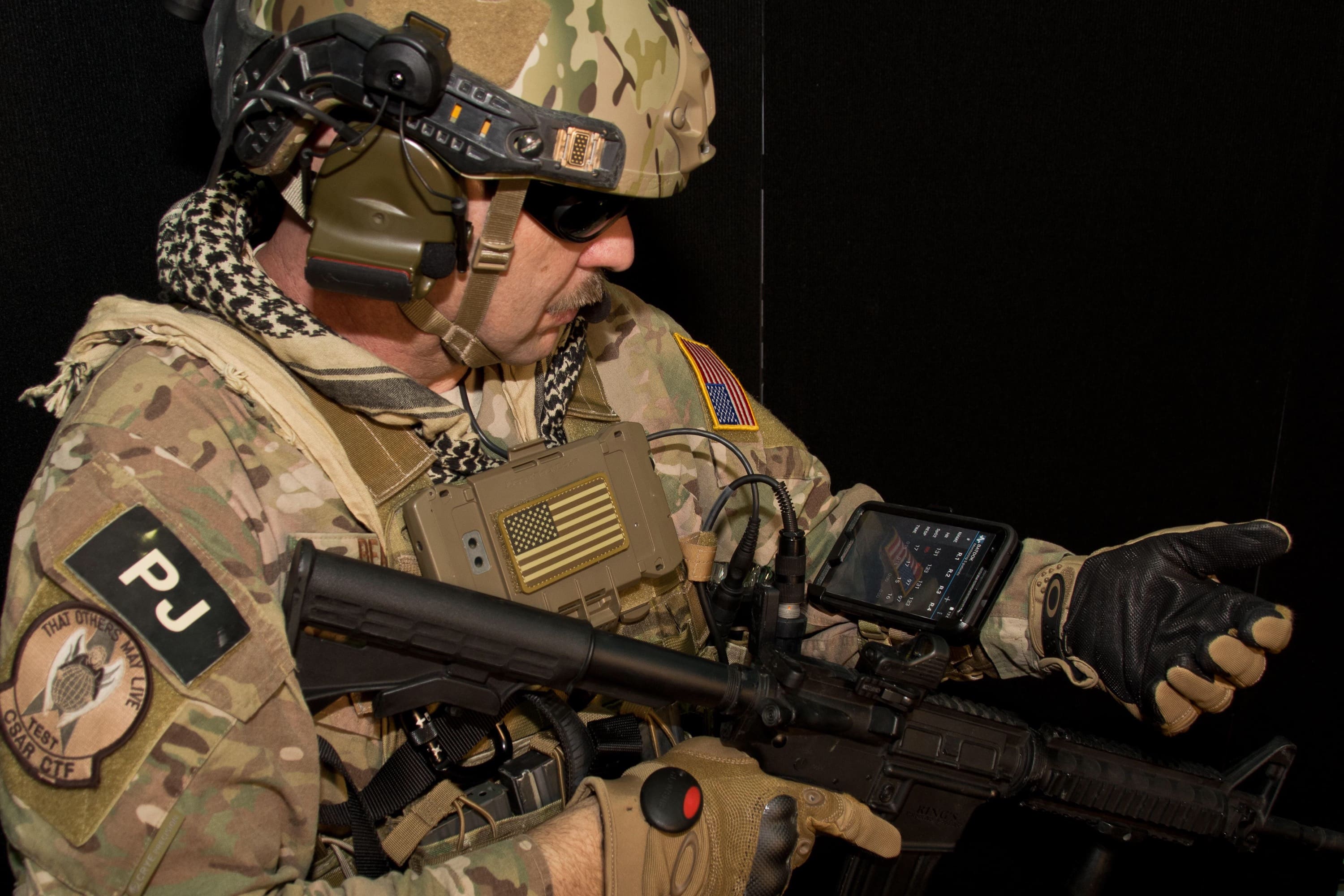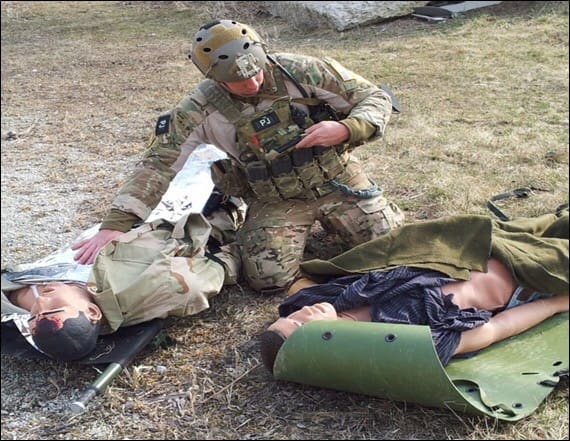Just last week I was discussing AFRL’s BATMAN effort with some colleagues. Let’s hope this latest project sees a transition from lab to the field.
FALLS CHURCH, Va. (AFNS) — Imagine a future battlefield where an Air Force pararescue jumper treats seven wounded service members at once. He places sensors on their chests, arms and fingers, which immediately feed vital signs to a small wireless computer, no bigger than a cell phone, on his forearm.
As he checks out the fifth person, his computer vibrates. He looks at the computer screen: the second person’s heart rate is dropping. The pararescueman moves back to the second person and performs chest compressions, saving their life.
That future is not far off. Engineers with the 711th Human Performance Wing from the Human Effectiveness Directorate at Wright-Patterson Air Force Base, Ohio, are working on exactly this kind of wearable technology to assist medics in the field.
It’s called BATDOK (Battlefield Airmen Trauma Distributed Observation Kit), and it is part of a larger advanced technology demonstration program known as BATMAN (Battlefield Air Targeting Man-Aided Knowledge), which focuses on adapting technologies to dismounted Airmen.
“Currently PJs treat patients one-to-one,” said Dr. Gregory Burnett, the program’s chief engineer. “Now we can have one PJ treat and monitor multiple patients simultaneously.”
BATDOK runs on a smartphone but can transfer to any variety of devices. “If a PJ wanted to run it in the field, he could use it on a smartphone,” Burnett said, “or he could use it on a 10-inch tablet in a helicopter.”
BATDOK includes wrist and chest mounts to make access to the device easier, although some PJs simply prefer keeping the device in their pocket.
Wireless sensors placed on the patient send aggregated vitals to the computer screen, providing PJs the ability to make emergency medical decisions. Like a cellphone, the device can be set for three kinds of alerts: auditory, tactical or visual. The alerts notify the PJ not only to which patient is in danger, but also to his or her vitals.
To develop this technology, the BATMAN research team worked very closely with PJs to identify what critical information the operators needed so the team could develop the most intuitive and effective interface.
Burnett explained that there are three phases to the team’s work: interface, innovate and integrate. Through direct interaction with the operators, the team innovated a solution, and integrated it to the PJs’ equipment and mission needs.
BATDOK does not just help during critical care. It keeps a record of all its patients’ vitals and other information. After a mission, a PJ could retrieve the data for a patient care report.
“All those key medical care procedures are logged for better documentation of care,” Burnett said.
It is also adaptable for improved technology. “We use FDA approved sensors,” said 1st Lt. Max Gabreski, a software engineer on the BATMAN team, “but if a new sensor becomes available, we find a way to quickly integrate the sensor into our system.”
BATDOK could also be used on humanitarian missions, where a commander monitors a team entering an earthquake- or tsunami-ravaged area. “It could accommodate not just the military, but civilian needs,” Burnett added.
Presently, BATDOK is being tested by Air Force Special Operations Command and Air Combat Command, and will be brought to decision boards soon. It is also being used in training scenarios at strategic locations around the United States.
“It’s getting a lot of attention from the pararescue community,” Burnett said. “It’s a really effective system, capable of improving patient survivability not just in the Air Force, but the DOD and the civilians that it cares for.”
The story originates at www.af.mil/News.




The folks at Athena GTX developed this exact same technology eight years ago and showed it to the PJ’s back then. I am afraid this is another case of the MIL taking an existing idea, creating a Program Office to “develop” it, hiring a bunch of people, spending a ton of money and then basically ripping off the private companies idea. They are going to kill off any incentive to develop COTS items if they keep stealing intellectual property.
please elaborate on what you mean by the exact same technology, i was around then and never saw it.
Google Athena GTX and Mini Medic and tell me it’s not the same thing. Their product used a dedicated receiver in lieu of a smart phone (pre-dated widespread adoption) but same same. It was worked up by the guys at Bragg and Athena but I was in the meeting at Hurlburt when it was shown to AFSOC.
Cool concept applicable in the .civ world to mass casualty events. A force multiplier for the tac medics.
MasCas was exactly what I was thinking.
Nice extended e-Rail in the helmet
Is that micro reddot able to see over the front sight? I get the whole both eyes open aiming concep. But that setup, although light, seems less than ideal.
Does it triage a head wound? So when my EXPECTED is gonna die anyway is this device gonna keep telling me his vitals are more important than my pneumothorax URGENT?
I have worked a MASCAS event. 2 dead, 1 urgent surg, 23 routine. That device would have probably just pissed me off. I see the potential but…. New tech can’t replace good medics.
I can see it being useful when you have a bunch of relatively stable patients that you have to sit on for a while. I can’t see it replacing continual reassessment for the initial stages of a mass casualty event, just too much simple vitals won’t tell you. Trending is great for PFC, but you still gotta do all the work to get everyone to that point.
I’d also like to see the patient side of the device,. Is it going to be something you can even afford the space/weight to pack several of?
You don’t do chest compressions on the battlefield. I’m not a medic but I’m just saying….